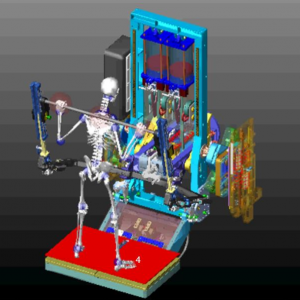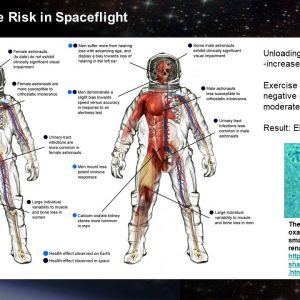Computational Modeling
Computational modeling is the use of computers to simulate and study the behavior of complex systems using mathematics, physics, computer science, and machine learning techniques. Researchers at NASA Glenn are specifically helping to quantify spaceflight-induced changes in human physiology to help characterize the risks to astronauts during exploration missions. The crew health and performance probabilistic risk assessment (CHP-PRA) project extends beyond PRA analysis on the medical system to the entire CHP system. There are many factors to consider including over thirty human spaceflight risks, health and performance standards, vehicle constraints and mission objectives, and crew training and skill mixes. The NASA Human Health, Medical, and Performance Spaceflight Standards (NASA-STD-3001) addresses a range of systems including ground operations, countermeasures, behavioral health, medical capability, environmental health, and extravehicular activity health and requires NASA programs to utilize PRA techniques to understand and estimate risk to the crew. This project is currently in a proof of concept stage, and additional information on it will be posted to this website soon.
Computational Modeling Projects
Grid ViewList View
Today, scientific computing is vital to NASA’s research programs. It is used to help solve research problems that cannot be solved through experimental approaches that have safety hazards, and are time consuming or expensive. NASA GRC uses computational modeling in the HRP to assist in the understanding of many conditions and potential outcomes of human research in long duration, microgravity environments.




